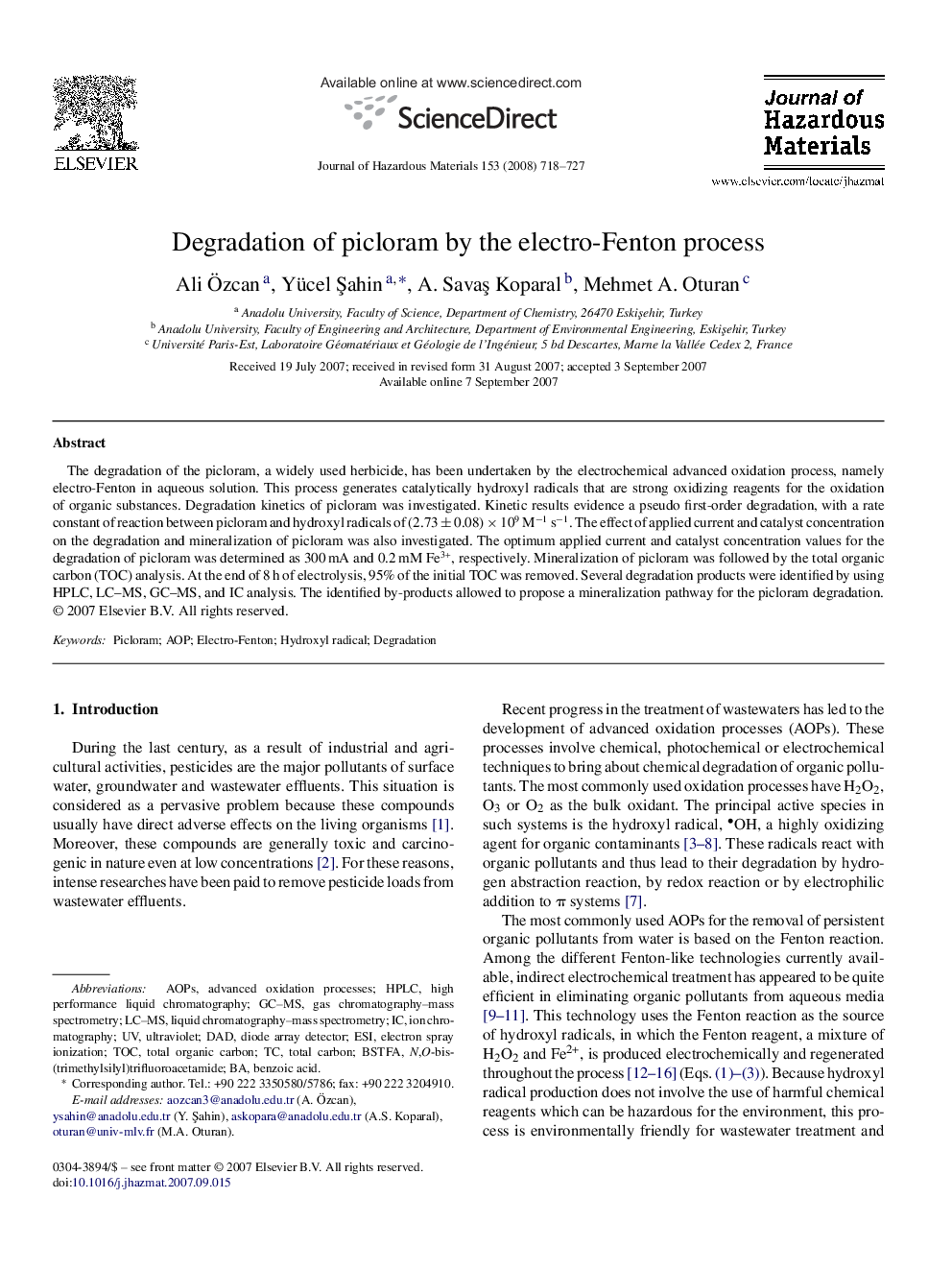| Article ID | Journal | Published Year | Pages | File Type |
|---|---|---|---|---|
| 583162 | Journal of Hazardous Materials | 2008 | 10 Pages |
Abstract
The degradation of the picloram, a widely used herbicide, has been undertaken by the electrochemical advanced oxidation process, namely electro-Fenton in aqueous solution. This process generates catalytically hydroxyl radicals that are strong oxidizing reagents for the oxidation of organic substances. Degradation kinetics of picloram was investigated. Kinetic results evidence a pseudo first-order degradation, with a rate constant of reaction between picloram and hydroxyl radicals of (2.73 ± 0.08) Ã 109 Mâ1 sâ1. The effect of applied current and catalyst concentration on the degradation and mineralization of picloram was also investigated. The optimum applied current and catalyst concentration values for the degradation of picloram was determined as 300 mA and 0.2 mM Fe3+, respectively. Mineralization of picloram was followed by the total organic carbon (TOC) analysis. At the end of 8 h of electrolysis, 95% of the initial TOC was removed. Several degradation products were identified by using HPLC, LC-MS, GC-MS, and IC analysis. The identified by-products allowed to propose a mineralization pathway for the picloram degradation.
Keywords
PicloramDADESIBSTFATOCAOPAOPsGC–MSLC–MSdiode array detectorUltravioletElectro-FentonBenzoic acidDegradationHydroxyl radicalliquid chromatography–mass spectrometrygas chromatography–mass spectrometryAdvanced oxidation processeshigh performance liquid chromatographyHPLCIon chromatographytotal carbonTotal organic carbonElectron spray ionization
Related Topics
Physical Sciences and Engineering
Chemical Engineering
Chemical Health and Safety
Authors
Ali Ãzcan, Yücel Åahin, A. SavaÅ Koparal, Mehmet A. Oturan,
